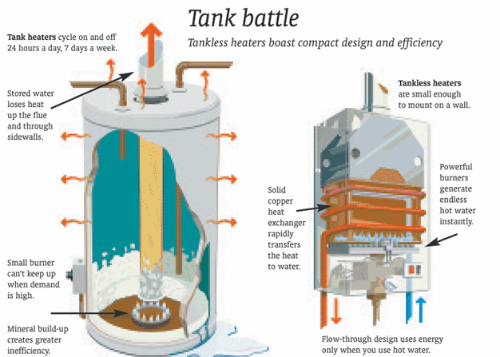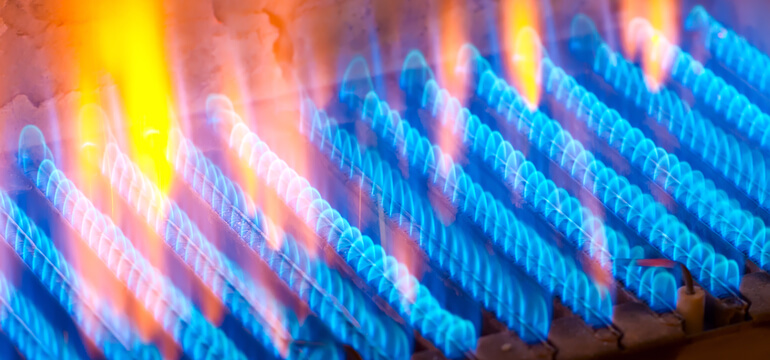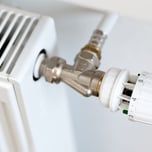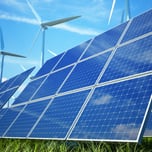Answer these simple questions and we will find you the BEST prices
Which type of solar quotes do you need?
It only takes 30 seconds
100% free with no obligation

Get up to 4 quotes from our selected suppliers by filling in only 1 form

Save money by comparing quotes and choosing the most competitive offer

Our service is 100% free and with no obligation
- GreenMatch
- Heating
- Central Heating Pump System
Central Heating Pump System
Central heating is a system through which a building (or some parts of a building) are heated up through the heat produced at one point: the furnace room in a house or a mechanical room in a building. The heat is usually produced by burning fossil fuels and then it is distributed either through air, steam or water.
Different Modes of Heating
There are different heating systems, the main ones being: water heating, electric and gas-fired heaters and hydronic and steam systems.
1. Water Heating

In order for this system to work, there are four necessary elements:
- Gas supply lines.
- A boiler or a heat exchanger that heats water.
- A pump that pushes the water in the system.
- Radiators that are installed on the walls and transfer the heat to the rooms.
Many of these systems in Europe have a double function as they serve both as a heating source for the building and a hot water source for multiple users and devices.The difference is that tankless (demand-type or instantaneous) water heaters provide hot water only when needed since as soon as the tap is opened, cold water is heated and it comes out of the tap. However, storage water heaters are different, as the tank needs to be filled with a certain level of hot water before it can be used.
2. Electric and Gas-Fired Heaters

Electric heating extracts heat from electricity through the use of many devices. This heating mode is usually embedded in a fan air conditioning system that transfers the heat to resistance coils which never work simultaneously in order to avoid major problems with the electric system. The energy is transferred to each tool through a thermostat that monitors the water temperature level and that opens and closes accordingly. When the water is at the desired temperature, it opens and it closes to heat the water more rapidly.
Gas-fired heaters burn gas in a similar way as oil-fired furnaces as it needs to feed the fire under the tank that heats the water which then turns it into gas. The tank will usually wear out quicker than that used in the electric process.
Alternatively, tankless heaters are used and they provide hot water only when needed. A second problem is represented by the fact that the tank needs to reach a high temperature to heat the water and this leads to earlier worn-out.
Since the cost of installing central heating is a hefty investment, consult a trusted heating expert to choose the source of heat that suits your home before the installation.
3. Hydronic and Steam Systems
Hydronic heating systems use either boilers or district heating to warm water and then push it through a pipeline system that transfers the water and heat from the part below the floor to the upper one through a motor driven pump, increasing the temperature in the room. This is a closed system as there is no exchange with the outside: it is always the same liquid which goes through the cycle over and over again. In order to control the water pressure, the system has a sealed expansion tank that collects the water in case of higher than normal pressure. Steam systems work in a similar way, the only difference being the steam used instead of the water.
Structure of the Central Heating Pump System
1. Water Comes Into the Pump
2. Electric Cable
3. Electrical Connections
4. Pump Bleed Screw
5. Water Out of the Pump
Functions of the Central Heating Pump
The Central Heating Pump moves water around a central heating system: hot water runs in a circle from the boiler to the radiators and to the boiler again. The hot water from the boiler goes through the radiator and releases heat. It then warms up the room, while the water becomes colder, then going back to the central heating pump to restart the cycle.
Problems of the Central Heating Pump
Here we list some problems (and their quick solution) that you might encounter with your central heating pump.
- Hot pump: the pump needs to be replaced. The pump needs to be warm not extremely hot.
- The pump produces rattling or Humming noise: either the pump or the screws might be loose.
- Grating or knocking noise there might be something wrong inside the pump and it needs to be replaced.
- The pump only heats some radiators: there might be not enough power around the central heating pump.
- Noises in the central heating: there might be air in the central heating or it might be bleeding.
- The boiler heats the water but not the central heating: this usually happens when the central heating has not been active for some time. A gentle/love tap with the hammer might be necessary to free the motor or the piece that is stuffed. However, it might also be harmful as it could break some parts inside the device.
- The boiler heats the central heating but not the water: the reason is similar to the former case and the procedure to be followed is the same also.
- The pump does not make any noise and it seems out of work: the problem might be related either to Residual Current Devices (RCDs) that regulate the electricity supply and turn it off in case of warning or to fuses that have similar functions.
- The pump switches on and off all the time: the thermostat might be broken so that it is not possible to monitor the internal temperature and activate or deactivate the pump accordingly.
- The pump keeps breaking: free the pump from dirt or waste that might have been collected over time.
We strive to connect our customers with the right product and supplier. Would you like to be part of GreenMatch?





